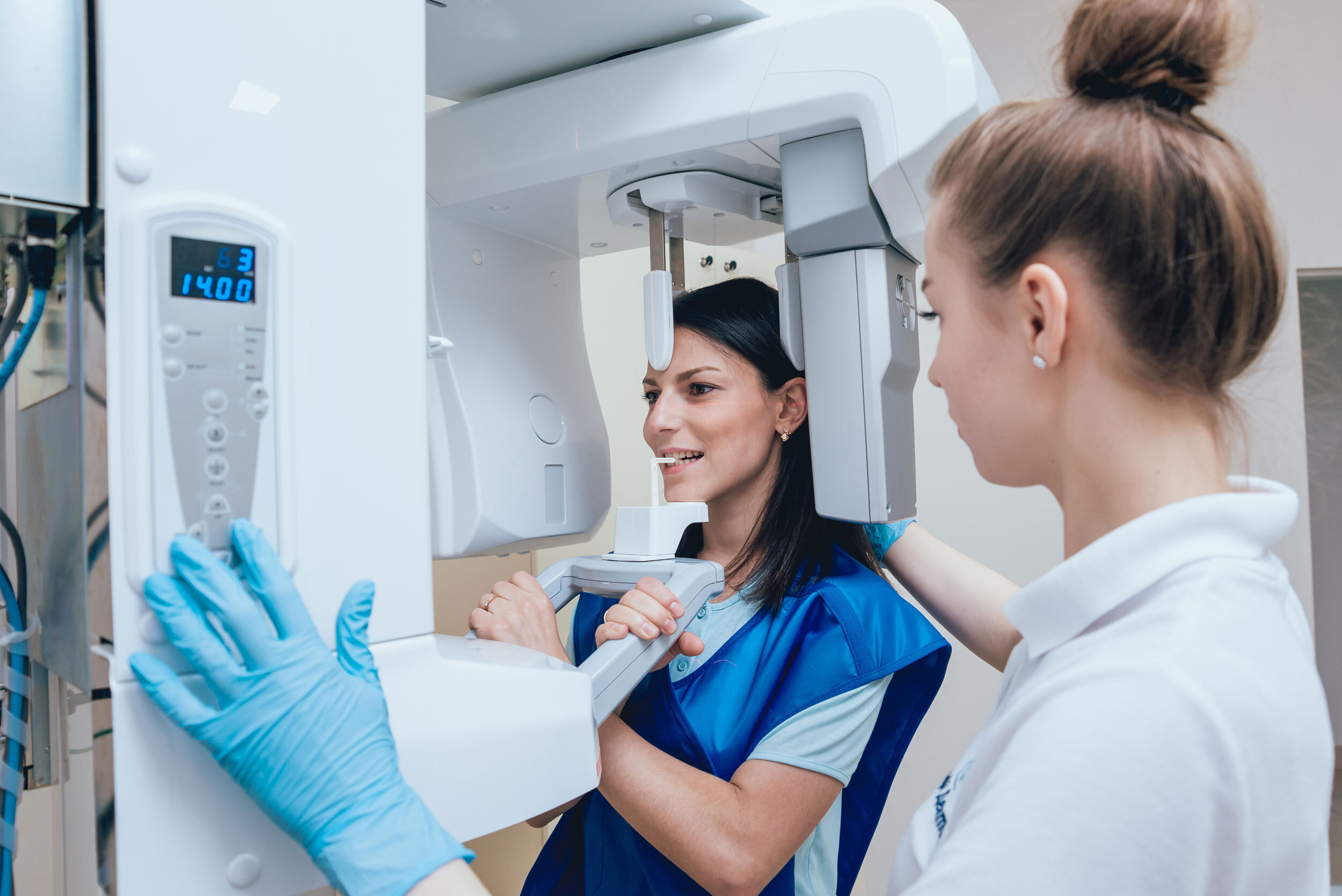
3D X-Rays
For dentistry to be effective, precision is required throughout the diagnosis and treatment of your condition. Fortunately, digital technology affords us an opportunity to obtain the highest resolution images available today, while increasing the safety of x-rays. Many patients are health conscious and concerned about excessive radiation. You will be happy to know that the introduction of digital x-rays has reduced radiation up to 90 percent. That makes them incredibly safe and an excellent way to protect your oral health.
What is 3D Cone Beam Technology?
Most dental x-rays provide us with a flat, two-dimensional image. While this is adequate for diagnosing common dental conditions, such as decay and infection, a flat 2-D image cannot show us other important aspects of your oral health like your joints and bone density. A 3-D cone beam x-ray machine moves around your head, taking multiple images that are then layered on top of one another to create an accurate 3-D view of your teeth, sinuses, jawbones, jaw joints, and other structures, such as existing dental implants. Our dentists can manipulate the images within our software to get a view from every angle. This allows us to plan your surgery long before placing your dental implant.
Precise Dental Implant
Placement and Restoration
By using 3-D cone beam technology, we can determine the best location to place your dental implant to achieve the greatest stability and longevity. Our dentists can use these images as a guide to plan your procedure within fractions of a millimeter, so that your bone and dental implant have the best chance of full integration. When this type of precision goes into a dental surgery, you can expect exceptional results! The placement of your final restoration – your dental implant crown – also plays a factor in the success of your dental implant. The correct size, shape, height, and relationship with opposing teeth is essential for dental implant longevity.
Diagnosing TMJ Disorders
Millions of Americans suffer from jaw pain, headaches, clicking, popping, or locking jaw joints, which are all associated with a joint disorder known as temporomandibular joint dysfunction. TMJ, or TMJD as it is also known, is a broad description of a wide variety of painful symptoms.
Using 3-D cone beam technology, we can clearly capture images of your jaw joints and their relationship to each other. We can also use these images to evaluate your bite and determine if malocclusion (misalignment of your bite) is a factor in your condition.



